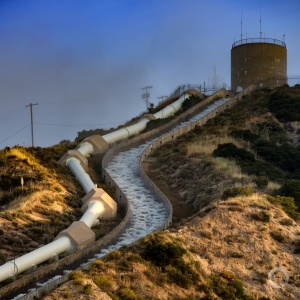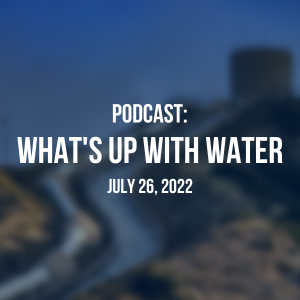Federal Water Tap, July 25: EPA Hints at Future PFAS Standards
The Rundown
- EPA staff hints at the maximum contaminant level goal for two PFAS chemicals.
- EPA also expects to change interim health advisories for the same two chemicals, PFOA and PFOS.
- The Interior Department releases guidance for using infrastructure funds for abandoned coal mine reclamation.
- The U.S. Geological Survey investigates PFAS chemicals in West Virginia drinking water sources.
And lastly, states in the upper Colorado River basin tell the Bureau of Reclamation that three lower basin states ought to shoulder most of the conservation burden.
“We know these numbers will change.” — Betsy Behl, director of the U.S. Environmental Protection Agency’s Health and Ecological Criteria Division. Bloomberg Law reports that Behl told the agency’s Science Advisory Board during a meeting on July 20 that interim health advisories for two PFAS chemicals are likely to be adjusted.
In context: EPA Warns of Health Problems When PFAS Levels in Drinking Water Are Inconceivably Tiny
By the Numbers
58 Percent: Expected spring and summer runoff into Lake Powell, as compared to the 30-year average. The meager runoff is occurring despite near-normal precipitation in the watershed since October. Heat and dry soils have robbed the reservoir of water.
News Briefs
EPA Hints at PFAS Regulatory Levels
In a July 20 meeting with the agency’s science advisers, EPA staff began to sketch the contours of federal regulation of PFAS chemicals in drinking water.
The EPA is preparing to release draft national drinking water rules this fall for PFOA and PFOS. Those rules will include a maximum contaminant level (MCL) and a maximum contaminant level goal (MCLG) for each chemical.
Utilities will be required to treat drinking water so that chemical concentrations are below the MCL. The MCLG, on the other hand, is set based on the expectation of no long-term health risk and is not an enforced standard.
According to its presentation to the Science Advisory Board, the agency noted that the MCLG for the two chemicals will likely be below the minimum reporting level of 4 parts per trillion.
The minimum reporting level is the level at which a chemical can be reliably quantified in a sample.
Abandoned Coal Mine Cleanup
The Interior Department released guidance to the states and tribes for using $11.3 billion in federal infrastructure bill funds to clean up abandoned coal mines.
The bill makes available about $725 million a year over the next 15 years.
In addition to restoring streams damaged by coal mining, the funds can be used to build water treatment facilities, if that water was affected by mining.
Disadvantaged communities are supposed to be a first priority for funding, the guidance says.
Studies and Reports
PFAS in West Virginia Drinking Water Sources
The U.S. Geological Survey tested untreated water from 279 sites that are used for public drinking water supply for the presence of PFAS chemicals.
Of those sites, which included groundwater and surface water, about a quarter showed at least one PFAS chemical. Six percent of sites had three or more chemicals present in the water sample.
On the Radar
Colorado River Negotiations
The four upper Colorado River basin states told the Bureau of Reclamation in a letter that most of the conservation needed to correct the basin’s demand imbalance should come from the three lower basin states.
The letter from the Upper Colorado River Commission comes amid urgent conservation negotiations that accelerated last month, when Camille Touton, Reclamation’s leader, told the basin states they need to do more to protect water levels in lakes Mead and Powell.
Touton told the states to develop a plan by mid-August. If they do not take the necessary steps, Reclamation would intervene.
The letter argues that lower basin states of Arizona, California, and Nevada, because they use more water, should carry a bigger conservation burden. Even though Nevada is in the lower basin, its Colorado River water use is a fraction of its neighbors.
Federal Water Tap is a weekly digest spotting trends in U.S. government water policy. To get more water news, follow Circle of Blue on Twitter and sign up for our newsletter.
Brett writes about agriculture, energy, infrastructure, and the politics and economics of water in the United States. He also writes the Federal Water Tap, Circle of Blue’s weekly digest of U.S. government water news. He is the winner of two Society of Environmental Journalists reporting awards, one of the top honors in American environmental journalism: first place for explanatory reporting for a series on septic system pollution in the United States(2016) and third place for beat reporting in a small market (2014). He received the Sierra Club’s Distinguished Service Award in 2018. Brett lives in Seattle, where he hikes the mountains and bakes pies. Contact Brett Walton







Leave a Reply
Want to join the discussion?Feel free to contribute!